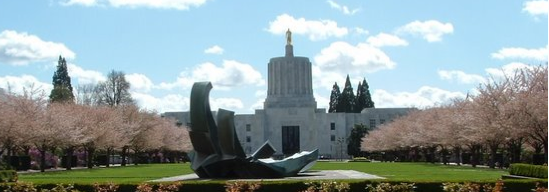 The once (and future?) source of fine woolen goods. Image by Travel Salem via Flickr
The once (and future?) source of fine woolen goods. Image by Travel Salem via Flickr
Mission Mill Museum’s Sesquicentennial Fall Speakers’ Series
Immigrant Experiences in a Multi-Ethnic Oregon
Though much has been written about those pioneers who traveled the Oregon Trail to start a new life in the Oregon Country, these were not the only people who traveled many miles, facing trials and tribulations to settle in our State. This lecture series, starting October 17th at 2 p.m. and running for six consecutive Saturdays, will present to the audience some of the ethnic/immigrant group experiences in Oregon. This lecture is made possible in part by a grant from the Marion Cultural Development Corporation. Admission to each lecture is $5 for Non-Members, $2 for Museum Members, Children (17 and under) and students (with IDs).
October 17th, 2 p.m.
Immigrant Experience: Kam Wah Chung Archaeology with Nancy Nelson
In the community of John Day, Oregon, we find a historic Chinese medicinal herb shop, which was operated by Dr. Ing Hay and Lung Ong from the 1870s through the 1940s. Archaeologists conducted investigations on the grounds of the Kam Wah Chung within the last few years, and evidence of John Day’s “ China Town” will be highlighted. This story is presented by Nancy Nelson, an archaeologist for Oregon State Parks and Recreation Department. She received her education from Oregon State University and the University of Oregon in Anthropology.
October 24th, 2 p.m.
Immigrant Experience: Mexicanos in Oregon with
Erlinda Gonzales-Berry
The number of Latinos residing in Oregon has increased dramatically in the last decade, leading one scholar to speak of the “browning of Oregon.” This, however, is not a new phenomenon, for there has been a settled-out, Mexican-origin population since the 1930s. Erlinda Gonzales-Berry explores the seventy-five year history of migration and settlement of Mexicans in Oregon, highlighting their sustained practices of community building, struggles for integration, and contributions to the cultural and economic landscape of the state.
October 31st, 2 p.m.
Immigrant Experience: Finding Freedom - African Americans in Oregon with Elizabeth McLagan
Economic opportunity and personal liberty were dreams common to westering immigrants. Free land was available. Barriers of class and perhaps gender and even ethnicity and race might be lifted. However for African Americans, as presented by Elizabeth McLagan of Portland Community Collage, the adversities went beyond the struggle of the journey and the difficult road to prosperity. We will examine some of the special challenges and remarkable achievements of Oregon’s African American citizens.
November 7th, 2 p.m.
Immigrant Experience: Jewish Oregonians with Ellen Eisenberg
Gun totin’ rabbis? Jewish homesteaders? In popular culture Jews are so strongly associated with New York that western Jewish images strike some as oxymoronic. Yet Jews have, since before statehood, been Oregonians. This talk by Ellen Eisenberg, the Dwight and Margaret Lear Professorship in American History at Willamette University, explores who they were, why they came, and the reception they found here. Several snapshots of Jewish Oregonians will be used to illustrate their experiences as immigrants and as native sons.
November 14th, 2 p.m.
Immigrant Experience: The Japanese in Oregon with June Schumann
Immigrants from Japan were among many groups from throughout the world…across the Atlantic as well as the Pacific Ocean who settled in Oregon and were participants in the growth and development of the state through the years. Through historic photographs from Oregon families, June Arima Schumann, the former executive director of the Nikkei Legacy Endowment, gives us an overview of early Japanese settlements and touches on one of the important chapters in American (and Oregon) history. This talk explores how the history of people of Japanese ancestry is part of the larger American experience. It also suggests how this history is relevant to discussion about civil liberties, how we understand our country’s past, and how we might better understand issues facing us today.
November 21st, 2 p.m.
Immigrant Experience: Swedes in Oregon with Lars Nordström
Swedes began filtering into the Oregon Territory with the first wave of white settlers. At first, their numbers grew slowly, but after 1883, when the railroad connected Portland to the national grid, the flow accelerated. Swedish-American author Lars Nordström will explain that by1910 Swedes were the second-largest foreign-language immigrant group in the state. The influx diminished by the end of the 1920s, and ever since, Swedish immigration toOregon has been a tiny but steady trickle.
Mission Mill Museum 1313 Mill St SE Salem, OR 97301
(503) 585-7012 fax (503) 588-9902

![Reblog this post [with Zemanta]](http://img.zemanta.com/reblog_e.png?x-id=87a7d7aa-9387-442c-8c71-ad37392eadf2)




1 comment:
Thank you for this info. It's hard to keep up with everything, so this posting was very helpful.
Post a Comment